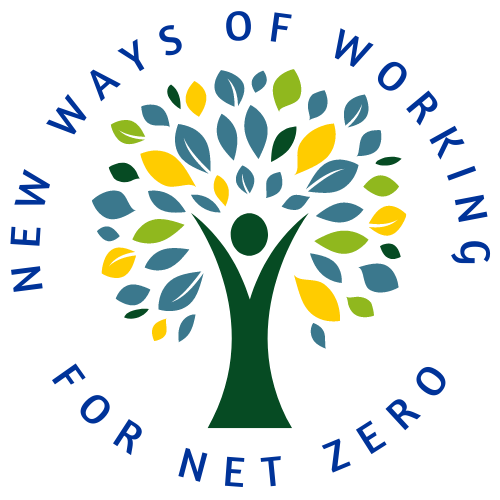Dr. Marjan Gusev, Professor and Digital entrepreneur
D-r Marjan Gushev is a computer scientist and professor at University Sts. Cyril and Methodius, at Faculty of Information Sciences and Computer Engineering, specialising in parallel processing, computer networks and Internet technologies.
Interview conducted on 25 August.2022
"There are many terms which work with the term of “Sustainability”. Sustainable IT for example refers to the IT strategies, projects and processes of companies, which aim at mitigating the harmful impact information technology has on the natural environment. As a result, we often refer to Sustainable IT as a Green IT...."
The interview:
Green IT strategies are gaining a lot of attention these days. People, companies, and nations are exploring ways to reduce the impact of the use of IT in companies on the natural environment. Suitability, Digital Sustainability, Green IT Strategies are frequently mentioned. In your opinion, can we make a distinction between the terms and discuss more about their value for companies and the environment?
Dr. MARJAN GUSEV:
There are many terms which work with the term of “Sustainability”. Sustainable IT for example refers to the IT strategies, projects and processes of companies, which aim at mitigating the harmful impact information technology has on the natural environment. As a result, we often refer to Sustainable IT as a Green IT. Compared to the Green IT, Digital Suitability refers to a broader scope of technologies, which aim to ensure the digital long-term growth of companies and may include IT which could be harmful for the environment as for example technology which is large energy consumer and similar. Both terms are not excluding each other though, rather need to be approached within one larger strategy of the company which will ensure long term sustainability (environmental and digital included) supported by IT. In that case, we are discussing about IT for Green, and these practices are beyond of just mitigating and reducing the impact of IT on the environment, as are in the Green IT. Rather they focus also on the positive impact IT have on the environments through transforming the operations of companies.
We know that Green IT Strategies reduce the harmful impact of company’s operations on the environment; however, can we identify any specific impact on the actual performance of companies?
Dr. MARJAN GUSEV:
The impact of the Green IT strategies on the actual performance of companies will depend on whether companies undertake proactive or reactive strategies. Both however, focus on the introduction od Green IT standards in the companies as for example ISO 14001, thus, both entail in its essence the promise of savings, lower costs, and higher profit margins. Their positive impact on the environment is still the main prerogative.
Let’s elaborate more in this regard.
Green IT standards provide metrics for sustainability, and set targets. Companies develop documents, policies and procedures to follow these metrics, formalising data for auditing and compliance. As a result, Green IT standards support process improvements in terms of reducing the energy consumption, reducing the IT expenditure, higher utilisation of resources (human resources included), all of which contributes to reducing costs and increasing profits. Green IT standards also serve as a learning platform for the organisation and its employees. They promote awareness about the environment and support creation of dynamic capabilities in organisations for increased efficiency and higher productivity. These are all benefits which arise from the organisation, the impact of Green IT strategies on the clients and potential client is an additional benefit as it ensures the market understands that the companies with Green IT strategies work on improving their processes and capabilities.
Now, this is all excellent when we read it (smile); however, how companies approach the introduction of Green IT standards in their processes is what makes a difference when it comes to performance. Companies with a cost-focused Green IT strategy will probably experience only marginal savings and these are not going to have a long term effect. Why? Simply because most of the companies will make it, and the competitive advantage of the savings will be gone as prices will be corrected. However, companies which approach it with a sustainability in the focus (not the cost) will make additional investments to improve their sustainability monitoring capability. This additional investment will improve all processes and will also work on making a cultural shift that embeds sustainable IT into work routines. Research indicates that in this case, the impact of Green IT strategies on companies is significant, long term, and substantial to decreasing their costs and increasing their profits. It is also very important for the environment, as it makes from the enterprises self-regulating entities, which understand their impact on the environment, monitor the same, and make proactive measures to minimise it.
Are they related, and in what way are they related to well-being at work (teleworking, right to disconnect)?
Dr. MARJAN GUSEV:
All organisational strategies depend on, and impact the employees, Green IT strategies included. In this regard, it is important to mention, that the proactive Green IT strategies penetrate all operations of companies, including the HR processes and the management of the human resources in general. There is impact on employees, and what this impact will be depends on the technology used. Thus, not all Green IT technologies impact the employees in the same way. For example, technologies which enable users to have a sense of presence in a remote location, often using advanced video conferencing, virtual reality, and robotics, reduce costs, reduce the impact of the work on the environment and they positively affect the well-being of employees. The employee needs not to go to the production capacities of the factory, work in a small and limited space, but can control the operations from his/her home by controlling a robot that moves and performs the work in the factory. To me this is a significant improvement in employee comfort (smile). Other significant Green IT technologies in this regard can be digitalization of processes which eliminate the need to print, sign, and approve documents. All approval is done electronically. Apart from reducing waste and increasing efficiency in terms of speed, these processes also increase employee comfort and well-being as they reduce stress and complexity.
Green IT Strategies thus can good for the companies too not only the environment. How can companies be motivated for developing and implementing them today and in the near future?
Dr. MARJAN GUSEV:
Companies can be motivated in many ways for developing and implementing Green IT strategies. Some of them through informative and educational campaigns which will provide more information and knowledge for companies on the benefits they have, and on the ways on how they can do it. These campaigns can be introduced by various stakeholders in the society, the government, the civil sector and etc. In this regard it is also important to incorporate the Green IT knowledge in the higher ed curricula in other to ensure the next generation of business and technological leaders are aware of these benefits and are know how to implement them.
Companies can also be motivated through government incentives or regulation. For example, tax incentives, grants, subsidies, carbon credits, and/or regulatory incentives. The roads are many.
For me, the high energy cost at the moment and the energy crisis is a significant motivator. Whether it will result only in cost-saving Green IT strategies, or it will result into a system for monitoring and improving the sustainability of companies will depend on the management capacities in the companies.
Can HR Managers help? In your view, are HR Managers or HR practitioners important for successfully implementing Green IT strategies in companies? Where do your see the significance of their role?
Dr. MARJAN GUSEV:
HR Managers and HR practitioners now days are often the most active change agents in companies. It is not enough to plan and introduce good strategies (Green IT included) if the employees have no capacities to implement them and make out of them a new dynamic capability of the companies on the long run. Therefore, I would say that the role of HR managers is on informing, training, and educating employees in the companies from the IT experts to the employees in the other departments, on what are Green IT standards, how are they implemented in the companies; and how to monitor the sustainability identified by their metrics.
Their role however does not end there. Implementing Green IT strategies usually means introducing transformative technology in the work of companies. As a result, HR managers together with the operational managers need to contribute in developing the new/changed work processes and adapt the HR practices. A good example is the work from home trend, where telepresence and teleworking are the Green IT technologies changing the workplace. HR managers need to work with the IT experts, Operations and the other departments in changing the work policies for measuring employee performance, work time, reward, even the soft outcomes as are monitoring and improving motivation, employee satisfaction and similar.








